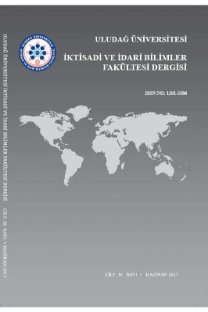Trade effects of Turkey’s antidumping duties
Türkiye bölgesinde en fazla antidamping kullanan ülke haline gelmiştir. Bu çalışmada Türkiye’nin antidamping vergilerinin, soruşturmalara konu olan ve olmayan ülkelerden yapılan ithalat hacimlerine etkisi gösterilmektedir. Arellano- Bond Genelleştirilmiş Momentler Yöntemi sonucu elde ettiğimiz bulgularımız, antidamping uygulamarının soruşturmalarda hedef alınan ülkelerden yapılan ithalatı azalttığı (ticaret daralması), fakat soruşturmalarda hedef alınmayan ülkelerden ise arttırdığını (ticaret sapması) göstermektedir. Her ne kadar ticaret sapması gercekleşse de, bunun etkisi antidamping uygulamalarının koruyucu etkisini ortadan kaldıracak kadar büyük değildir. Dolayısıyla, Türkiye’nin antidamping uygulamaları hem dampingli ithalatı kısıtlamakta, hemde yerli sanayiyi skorumakta etkilidir.
Türkiye’nin antidamping vergilerinin ticari etkileri
Turkey has become the heaviest antidumping user in its region. In this study, we document the impact of Turkey’s antidumping duties on the import flows of countries that are subject to and not subject to antidumping investigations. Our findings based on Arellano-Bond GMM modeling suggest that antidumping duties decrease imports of targeted countries (trade destruction) but increase imports of the non-targeted countries (trade diversion). Although trade diversion occurs, its effect is not big enough to eliminate the protective effect of antidumping duties. Therefore, Turkey’s antidumping practice is effective both in restricting dumped imports and in protecting the domestic industry.
___
Anderson, T.W., and Hsiao, C. (1982), “Formulation and estimation of dynamic models using panel data.” Journal of Econometrics, 18, 47–82.Arellano, M., and Bond, S. (1991), “Some tests of specification for panel data: Monte Carlo evidence and an application to employment equations.” Review of Economic Studies 58, 277–297.
Bown, Chad P. (2008), “The WTO and Antidumping in Developing Countries.” Economics and Politics 20(2), 255-288
Bown, C., Crowley, M. (2007), Trade Deflection and Trade Depression. Journal of International Economics 72(1), 176-201
Ganguli, B. (2008), “The Trade Effects of Indian Antidumping Actions.” Review of International Economics 16(5), 930-94
Khatibi, A. (2009), Trade Effects of European Antidumping Policy, ECIPE Working Paper, no.7
Lasagni, A. (2000), Does Country-Targeted Antidumping Policy by the EU Create Trade Diversion , Journal of World Trade 34(4), 137-159.
Malhotra N., and H. Rus. (2009), “The Effectiveness of the Canadian Antidumping Regime.” Canadian Public Policy 35(2),187-202
Niels, G. (2003), “Trade diversion and destruction effects of antidumping policy: empirical evidence from Mexico.” Mimeo OXERA and Erasmus University Rotterdam .
Prusa, Thomas J. (2001), “On the spread and impact of Anti-Dumping.” Canadian Journal of Economics 34(3), 591-611
Prusa, Thomas J. (1997), “The Trade Effects of US Antidumping Actions.” in Robert Feenstra (ed.), The effects of US trade protection and promotion policies. University of Chicago Press, 191-213.
Konnings, J, Vandenbussche, H., J. Konings and L. Springael. (2001) “Import diversion under European antidumping policy.” Journal of Industry, Competition and Trade 1(3), 283-299.
- ISSN: 1301-3386
- Yayın Aralığı: Yılda 2 Sayı
- Başlangıç: 2018
Sayıdaki Diğer Makaleler
Türkiye'de Bütünleşik Kıyı Yönetiminin aktörleri, rolleri ve sorumlulukları
İBRAHİM GÜRAY YONTAR, FERİŞTAH YILMAZ
Yaşam kalitesi ekseninde şekillenen alternatif Bir Kentsel yaşam modeli: Yavaş Kentleşme hareketi
Diyarbakır’da faaliyet gösteren KOBİ’lerin finansman sorunu çözümünde Kredi Garanti Fonu
Marka kaçınması: Beyaz eşya markalarına yönelik kalitatif bir uygulama
A virtual organization model for international LCL transportation
Ceren ALTUNTAŞ, OSMAN AVŞAR KURGUN
Trade effects of Turkey’s antidumping duties
AB Ülkeleri’nde bütünleşik Entropi Ağırlık-Topsis yöntemiyle AR-GE performansının ölçülmesi
Finansal Kırılganlık Endeksi (Türkiye 1989–2011) ve yorumlar
